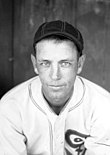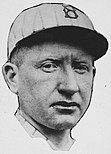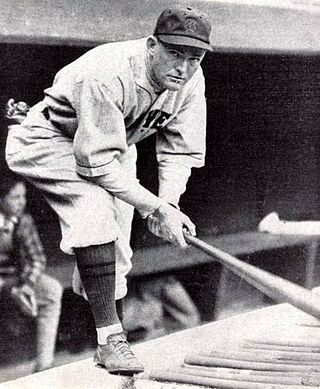
The 1942 election to the Baseball Hall of Fame was the first election that was conducted in three years. The Baseball Writers' Association of America (BBWAA) voted by mail to select from 20th century players and elected Rogers Hornsby.

Elections to the Baseball Hall of Fame for 1948 followed the same procedures as 1947. The Baseball Writers' Association of America (BBWAA) voted by mail to select from players retired less than 25 years, with provision for a runoff in case of no winner. It elected two people on the first ballot, Herb Pennock and Pie Traynor. Meanwhile, the Old Timers Committee, with jurisdiction over earlier players, met on no schedule and not this year. Criticism continued that earlier players, as well as managers and other non-playing candidates, were being overlooked.

Elections to the Baseball Hall of Fame for 2004 proceeded in keeping with rules enacted in 2001. The Baseball Writers' Association of America (BBWAA) held an election to select from recent players; Dennis Eckersley and Paul Molitor gained induction to the Hall.

Elections to the Baseball Hall of Fame for 2002 proceeded in keeping with rules enacted in 2001. The Baseball Writers' Association of America (BBWAA) held an election to select from among recent players; Ozzie Smith was elected.
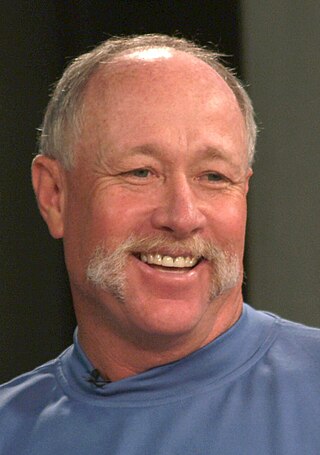
Elections to the Baseball Hall of Fame for 2008 proceeded according to revised rules enacted in 2001 and further revamped in 2007. The Baseball Writers' Association of America (BBWAA) held an election to select from among recent players, resulting in the induction of Goose Gossage. A restructured format for Veterans Committee voting resulted in the first successful election by that body since 2001, with five candidates earning induction, after the three elections in the intervening years had failed to produce any inductees. Selected by the Veterans Committee were former managers Billy Southworth and Dick Williams, and former executives Barney Dreyfuss, Bowie Kuhn, and Walter O'Malley.

Elections to the Baseball Hall of Fame for 1994 followed the system in place since 1978. The Baseball Writers' Association of America (BBWAA) voted by mail to select from recent major league players and elected Steve Carlton. The Veterans Committee met in closed sessions to consider older major league players as well as managers, umpires, executives, and figures from the Negro leagues. It selected two, Leo Durocher and Phil Rizzuto. A formal induction ceremony was held in Cooperstown, New York, on July 31, 1994.

Elections to the Baseball Hall of Fame for 1993 followed the system in place since 1978. The Baseball Writers' Association of America (BBWAA) voted by mail to select from recent major league players and elected Reggie Jackson. The Veterans Committee met in closed sessions to consider older major league players as well as managers, umpires, executives, and figures from the Negro leagues; it selected no one. A formal induction ceremony was held in Cooperstown, New York, on August 1, 1993.
Elections to the Baseball Hall of Fame for 1992 followed the system in place since 1978. The Baseball Writers' Association of America (BBWAA) voted by mail to select from recent major league players and elected two, Rollie Fingers and Tom Seaver. The Veterans Committee met in closed sessions to consider older major league players as well as managers, umpires, executives, and figures from the Negro leagues. It selected two, Bill McGowan and Hal Newhouser. A formal induction ceremony was held in Cooperstown, New York, on August 2, 1992.
Elections to the National Baseball Hall of Fame and Museum for 1987 followed the system in place since 1978. The Baseball Writers' Association of America (BBWAA) voted by mail to select from recent major league players and elected two, Catfish Hunter and Billy Williams. The Veterans Committee met in closed sessions to consider older major league players as well as managers, umpires, executives, and figures from the Negro leagues. It selected Ray Dandridge from the Negro leagues. A formal induction ceremony was held in Cooperstown, New York, on July 26, 1987, with Commissioner of Baseball Peter Ueberroth in attendance.
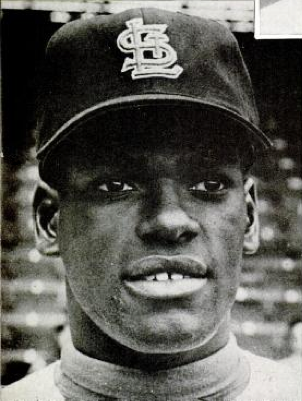
Elections to the Baseball Hall of Fame for 1981 followed the system in place since 1978. The Baseball Writers' Association of America (BBWAA) voted by mail to select from recent major league players and elected Bob Gibson. The Veterans Committee met in closed sessions to consider older major league players as well as managers, umpires, executives, and figures from the Negro leagues. It selected Rube Foster and Johnny Mize. Foster would be one of two people from the Negro leagues elected in seventeen years, before introduction of a separate ballot in 1995. A formal induction ceremony was held in Cooperstown, New York, on August 2, 1981, with Commissioner of Baseball Bowie Kuhn presiding.

Elections to the Baseball Hall of Fame for 1979 followed the system in place since 1978, except that players who appeared on fewer than 5% of BBWAA ballots would now no longer be eligible in future elections. The Baseball Writers' Association of America (BBWAA) voted by mail to select from recent major league players and elected Willie Mays. The Veterans Committee met in closed sessions to consider older major league players as well as managers, umpires, executives, and figures from the Negro leagues. It selected Warren Giles and Hack Wilson. A formal induction ceremony was held in Cooperstown, New York, on August 5, 1979, with Commissioner of Baseball Bowie Kuhn presiding. The annual Hall of Fame Game, an exhibition contest, was played the following day; this was the first time that the induction ceremony and game were held on different days.
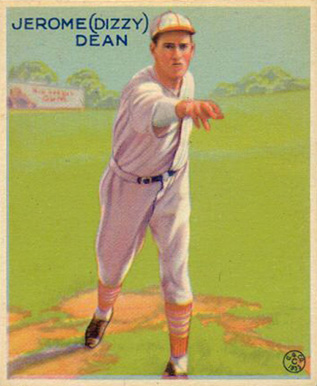
Elections to the Baseball Hall of Fame for 1953 followed a radically new procedure. The institution appointed its Committee on Baseball Veterans, the famous "Veterans Committee", to meet in person and consider pioneers and executives, managers, umpires, and earlier major league players. Committees in the 1930s and 1940s had chosen several pioneers and executives, but this was the first direction of anyone's attention to field personnel other than players, the managers and umpires.

Elections to the Baseball Hall of Fame for 1975 followed the system in place since 1971. The Baseball Writers' Association of America (BBWAA) voted by mail to select from recent major league players and elected Ralph Kiner. The Veterans Committee met in closed sessions to consider executives, managers, umpires, and earlier major league players. It selected three people: Earl Averill, Bucky Harris, and Billy Herman. The Negro Leagues Committee also met in person and selected Judy Johnson. A formal induction ceremony was held in Cooperstown, New York, on August 18, 1975, with Commissioner of Baseball Bowie Kuhn presiding.

Elections to the Baseball Hall of Fame for 1973 followed the system in place since 1971, plus the special election of Roberto Clemente, who had died in a plane crash on New Year's Eve. The Baseball Writers' Association of America (BBWAA) voted by mail to select from recent major league players and elected Warren Spahn. The Veterans Committee met in closed sessions to consider executives, managers, umpires, and earlier major league players. It selected three people: Billy Evans, George Kelly, and Mickey Welch. The Negro Leagues Committee also met in person and selected Monte Irvin. A formal induction ceremony was held in Cooperstown, New York, on August 6, 1973, with Commissioner of Baseball Bowie Kuhn presiding.
Elections to the Baseball Hall of Fame for 1969 followed the system reintroduced in 1968. The Baseball Writers' Association of America (BBWAA) voted once by mail to select from recent major league players and elected two, Roy Campanella and Stan Musial. The Veterans Committee met in closed sessions to consider executives, managers, umpires, and earlier major league players. It selected two players, Stan Coveleski and Waite Hoyt. A formal induction ceremony was held in Cooperstown, New York, on July 28, 1969, with Commissioner of Baseball Bowie Kuhn presiding.

Elections to the Baseball Hall of Fame for 1966 followed the system introduced for even-number years in 1956. The Baseball Writers' Association of America (BBWAA) voted by mail to select from recent major league players with provision for a second, "runoff" election in case of no winner. Ted Williams tallied more than 90% on the first ballot. Meanwhile, the Veterans Committee was meeting annually to consider executives, managers, umpires, and earlier major league players. It selected Casey Stengel. A formal induction ceremony was held in Cooperstown, New York, on July 25, 1966, with Commissioner of Baseball William Eckert presiding. During his acceptance speech, Williams advocated for the inclusion of Negro league baseball players, such as Satchel Paige and Josh Gibson, in the Hall of Fame. Paige was inducted in 1971, and Gibson in 1972.

Elections to the Baseball Hall of Fame for 1964 followed the system introduced for even-number years in 1962. The Baseball Writers' Association of America (BBWAA) voted by mail to select from recent major league players with provision for a second, "runoff" election in the event of no player receiving enough votes for induction. The runoff was necessary this year, with Luke Appling the winner. Further, the eligibility of retired players was reduced from having retired 30 years prior to election to 20 years prior.
Elections to Baseball Hall of Fame for 1960 followed a system established after the 1956 election. The Veterans Committee was meeting only in odd-numbered years. The Baseball Writers' Association of America (BBWAA) voted by mail to select from recent major league players, and as had been the case in 1958, elected no one. For the third time, the induction ceremonies in Cooperstown, New York, were canceled because there was no one to induct. This would be the last time until 2021 that no one was selected for induction to the Hall.
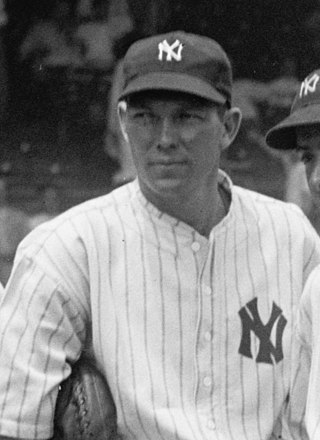
Elections to the Baseball Hall of Fame for 1954 followed a system practically the same as in 1952 because the new Veterans Committee was meeting only in odd-number years . The Baseball Writers' Association of America (BBWAA) voted by mail to select from recent players and elected three: Bill Dickey, Rabbit Maranville, and Bill Terry. A formal induction ceremony was held in Cooperstown, New York, on August 9, 1954, with Commissioner of Baseball Ford Frick presiding.

Elections to the Baseball Hall of Fame for 2010 proceeded according to rules enacted in 2001 and revised in 2007. As always, the Baseball Writers' Association of America (BBWAA) voted by mail to select from a ballot of recent players; one player was elected, Andre Dawson.


